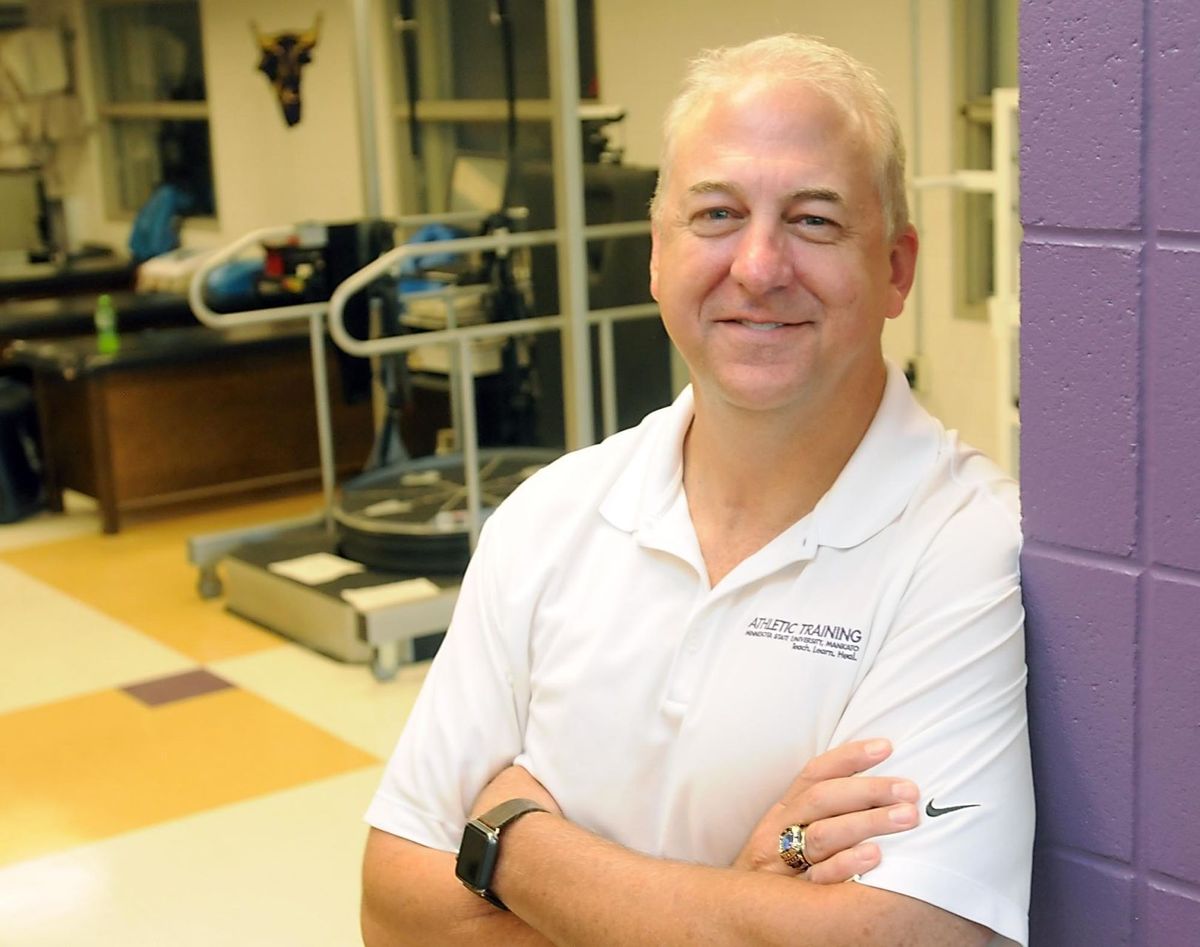
Article reposted from Mankato Free Press
Author: Jim Rueda
Over the years, Minnesota State’s Pat Sexton has garnered his share of awards. The professor and director of athletic training education at the college received a big one last month when he was inducted into the National Athletic Trainers’ Association Hall of Fame.
“It’s still a little surreal to me,” Sexton said in his office this week. “The truth is I don’t feel very comfortable getting awards. I have a job that I get paid to do and a lot of it just comes from my desire to help students and athletes. To get an award for doing those things just seems a little odd to me.”
Odd or not, Sexton is considered one of the pre-eminent educators and athletic trainers in his field. His journey began as an undergrad at Minnesota State in the early 1980’s, and he’s seen a lot of changes to his profession in the last 35 years.
The field of athletic training is constantly changing. “In fact,” said Sexton, “the only constant IS change.”
Concussions are the trendy topic in medical circles these days. Sexton said doctors and athletic trainers have come a long way from where they were two to three decades ago.
“It used to be if a player got his ‘bell rung’ but was still conscious and said he was all right to keep playing, the coach would just keep him in the game. We’ve learned how dangerous that can be.”
The cumulative effects of concussions may have long-lasting ramifications, and that’s why medical staffs are paying a lot more attention now. Not only do all the concussion symptoms have to abate before a player can return to the field, there is a progressive regimen of exercise that has to take place before he or she is cleared.
“But I’m sure that will change. too,” Sexton said. “Twenty years from now, they’ll probably look back and say ‘Really? That’s the way you treated concussions back then?’ ”
Sexton predicted the next two areas to garner attention will be heat-related illnesses and something called rhabdomyolysis (rhabdo for short).
Minnesota State may be a bit ahead of the curve when it comes to heat-related illnesses due to the death of Minnesota Viking offensive lineman Korey Stringer during training camp 15 years ago. The college and NFL have significantly stepped up awareness of the ailment since that tragedy.
Sexton said one of the main causes of heat-related illnesses is a lack of climatization.
“People sit in their air-conditioned offices or schools or houses or cars and then decide to go outside and work out for two or three hours,” he said. “That’s not good. The body needs time to adapt.”
Rhabdo is a condition in which damaged skeletal muscle breaks down rapidly. The condition can sometimes cause organ failure.
There was a case in Iowa not long ago when 16 members of a football team came down with it all at once. It tends to show up more frequently with crossfit workouts where there’s a lot of repetition. The muscles just break down.
Whatever the next injury-of-the-month turns out to be, Sexton is doing all he can to prepare himself and staff for its arrival. That means a lot of reading, a lot of research on the internet and attending a lot of clinics and conferences.
“New treatments are being developed all the time,” he said. “You have to sift through the ones that don’t pan out and try to determine the legitimate ones that actually work.”
Jim Rueda is the Free Press sports editor. Follow him on twitter @JimRueda